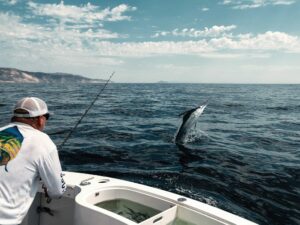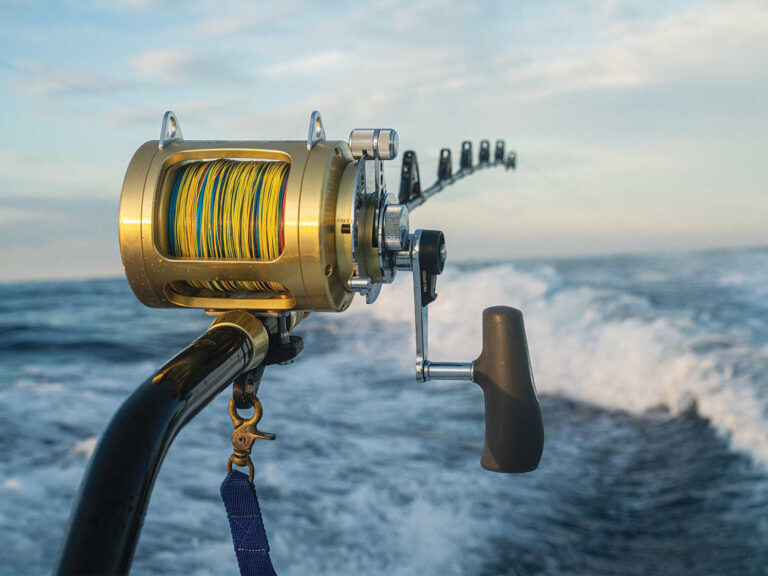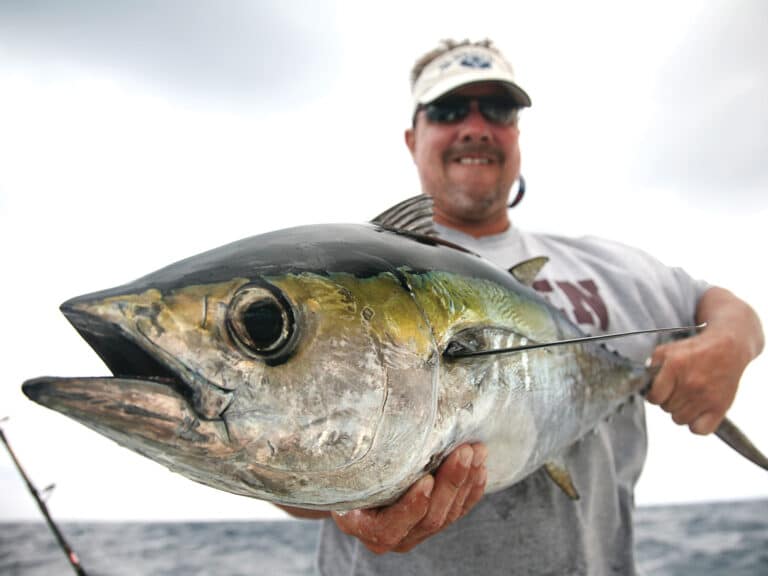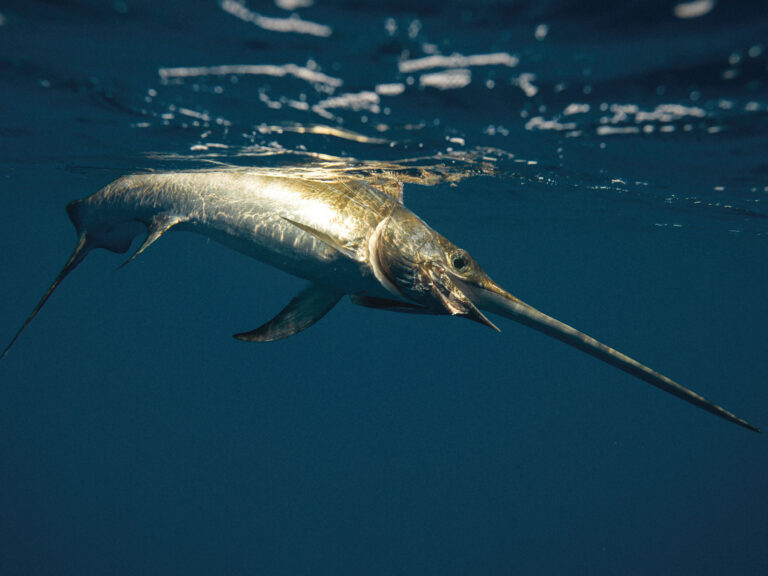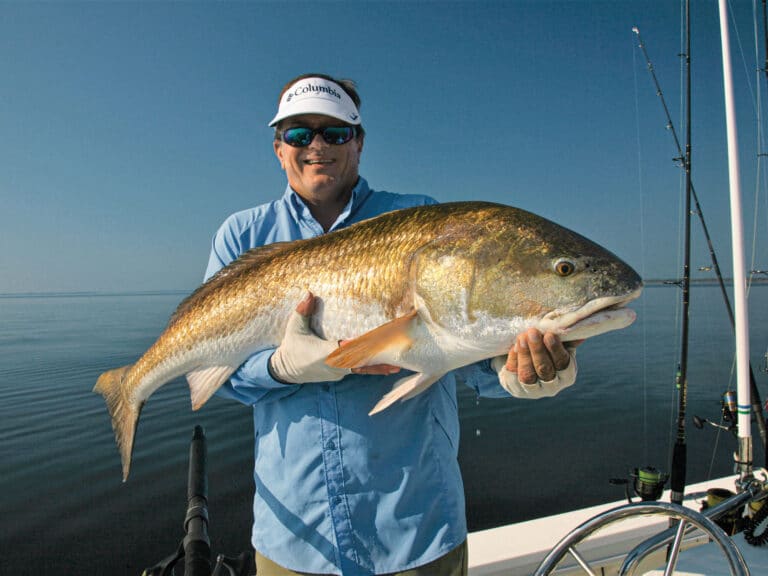
Tying the Hoo Fly
For years I have used various patterns to imitate microbaits. Courtesy of newer and better materials, the Hoo Fly evolved from these early creations.
In a fall 2007 edition of this magazine, I wrote about the Cage Fly, which combined a bucktail or feather tail with a head made from shredded flash combed into shape and coated with nail polish. The flash forms a flexible cage of fibers that surround the tail, hence the name. While effective, it’s not terribly durable and is sometimes a bit too flashy and opaque to look natural near a school of actual baitfish. Something more subtle was in order. The Hoo Fly takes the basic technique of the Cage Fly but exploits the benefits of more natural looking materials. The tail is typically craft fur, which gives the fly action even in the shortest lengths. Craft fur is also naturally self-tapering, and keeping or discarding the shorter underfur lets you regulate the thickness and taper of the tail.
The remainder of the body and head is made of Senyo’s Laser Dub, a chopped acrylic fiber blended with fine flash in a loose dubbing. When steelhead master and Laser Dub developer Greg Senyo released the product, fibers were short and offered only in bright colors. At the request of us saltwater tiers, however, Hareline Dubbin began to cut the fibers to a longer 1.5-inch length and dye it in more natural colors. While there are many ways to attach the Laser Dub to create the dimension of a baitfish body, perhaps the easiest is a series of V-ties of the material. Alternating on the top and bottom of the shank, the fibers are aligned with a few swipes of your fingers, tied in by their midpoint and folded back in a V to straddle the shank. After those fibers are combed into alignment with a metal comb, the result is a wispy, spongy veil of fibers that surround the tail, like on the original Cage Fly.
Laser Dub has some remarkable properties when tied this way. First, like the craft fur, it is also naturally self-tapering and assumes a baitfish shape without any trimming. It also lends itself to sculpting the different profiles of the various families of bait. If you want the rounder thickness of a finger mullet, tie in more dense bundles and distribute them to the sides of the shank. Conversely, if you want the deep-belly profile of a pinfish, bunker or butterfish, distribute more material up and down and use a comb to align the fibers vertically. For the mid-body baits — the silversides, mosquitofish and the like — a series of modest V-ties is usually sufficient.
Laser Dub also blends colors more easily than almost any body material. For the amber/tan of a bay anchovy, yellow and dark tan can be hand-mixed in seconds to your preferred hue. Black and white make an excellent mottled gray, and pink or red can always be blended in near the gill area. Because of the fine flash distributed through the fibers, Laser Dub also shows subtle but realistic flash and inner glow and becomes translucent when wet, lending further realism. It also absorbs water instantly, which allows an even sink rate.
The Hoo Fly’s final element is the coating that fixes the Laser Dub head into a permanent, durable and non-fouling shape. Left uncoated, the Laser Dub will lose its profile. After toying with various adhesives through the years, I learned about Liquid Fusion from Atlanta tier Kevin Arculeo. This urethane glue thins with water, remains flexible when dry, and is completely bombproof. It provides a perfect flexible skim coat for the Hoo. After the basic profile of the head has been combed into shape, you simply dab on a light coat of Liquid Fusion with a brush or bodkin to fix the shape permanently, taking care only to coat the surface and not to have the glue absorb into the guts of the fly. Because the glue is water-soluble until dry and nontoxic, you can safely moisten your fingers with water and stroke the Laser Dub into your preferred shape. The versatility of this tying style and materials used is where the Hoo really stands out. By varying amounts of the material and controlling the shape with your fingers, you can achieve the size, shape and movement of a variety of different baitfish. And as we all know, when fish key in on a specific bait, matching the hatch is in order.
Step One

Attach craft fur on top of the shank, just above the point. Retain some of the underfur for bulk.
Materials: Thread ➜ Fine mono. Hook ➜ Gamakatsu S12S. Tail ➜ Craft fur. Head/Body ➜ Senyo’s Laser Dub, dark over light. Coating ➜ Liquid Fusion. Eyes ➜ Fish Skull Living Eyes.
Step Two

Under the shank, tie light Lazer Dub at its midsection. Distribute equally on both sides of the bend and tie down to create a V. Invert hook and repeat with dark Laser Dub.
Step Three

Using the same procedure, tie in the light and then the dark Laser Dub at the middle of the shank.
Step Four

Bring thread to the eye, and without reversing the fibers that extend past the eye, tie the light Laser Dub on the bottom and the dark on top. Note pink blended into belly.
Step Five

Preen top and bottom fibers back, and put a dam of thread in front. Comb fly into shape, breaking and aligning all Laser Dub fibers to create a smooth baitfish profile.
Step Six

With a bodkin or brush, lightly coat the fibers from the hook eye to the bend with Liquid Fusion and use moistened fingers to set the shape of the head. Let dry and glue on eyes.




